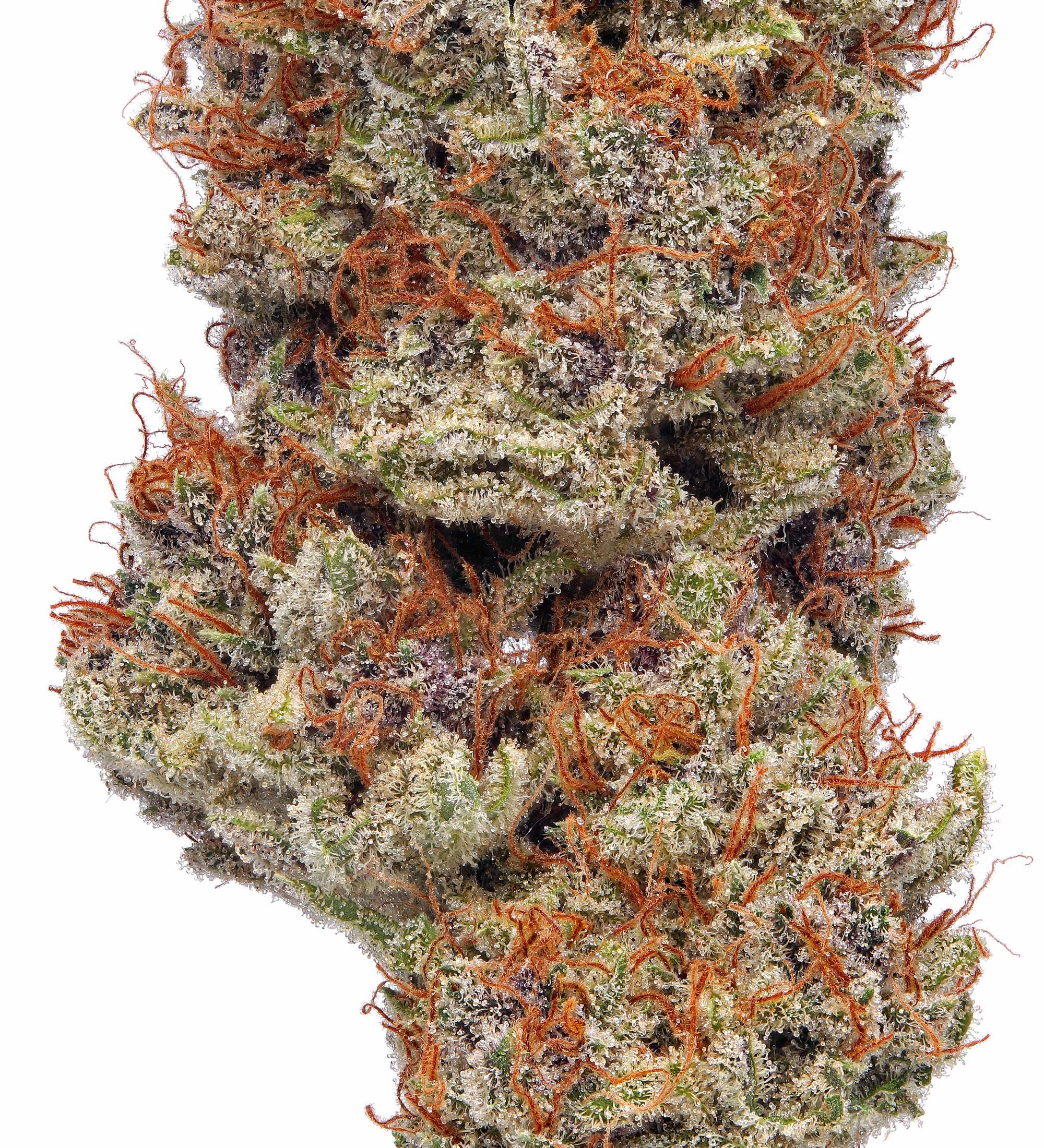Legacies
Preserving classic Humboldt strains
Blueberry Muffin
Photo courtesy of Humboldt Seed Co.
As the 1960s drew to a close, San Francisco hippies looking to start anew headed to Humboldt County in what would later become the “back to the land” movement. Once there, they erected little houses in the hills and many began growing cannabis. It began with Mexican and Thai strains, and then an Afghani strain made its way to California somewhere in the 1970s. This set the foundation for Humboldt Kush and other Humboldt legacy strains to follow. Cultivators in the Emerald Triangle are currently working to preserve some of these strains but many have been lost in time.
Trainwreck, Salmon Creek Big Bud, Blueberry Muffin and Garberville Purple Kush can still be found today, and are components of many popular varieties, but the original strains are difficult to find. “Legacy strains, things that help make Humboldt famous were originally derived from land race stock brought here from other cannabis producing regions and hybridized to fit the needs of the local farmers,” says Kevin Jodrey, career cannabis cultivator and owner of Wonderland Nursery in Garberville. “These lines became the building blocks of many of today’s elite lines but sadly, most do not exist today.”
Kevin Jodrey of Wonderland Nursery.
Photo by Thadeus Greenson
As cannabis became more mainstream, commercialized varieties appearing in magazines began to overshadow the varieties once prevalent in Humboldt. “As the change occurred in customer demand, Humboldt cultivators grew what the market desired,” says Jodrey. “As time went by, fewer and fewer of the original lines remained.” Despite this change, Humboldt cultivators stepped up to the challenge and continued to produce exquisite, world-renowned cannabis. “Any variety produced here became well known due to the quality and the quantity of production. Those two things made Humboldt legendary in the newer markets like it once was in the heritage markets.”
Around the same time, cannabis cultivators moved away from seed starts and began the more dependable process of cloning their plants. “Seed grown plants do not offer consistency,” says Nathaniel Pennington, founder of Humboldt Seed Co. “There was no such thing as seeds that had a known outcome.” Basically, plants grown from seed would stay in the same genre; the purples would be purple and the kushy would be kushy, but other characteristics would vary. “Eventually … large buyers wanted large quantities and consistency. Same smell, same look,” says Pennington.
Since its founding in 2001, the Humboldt Seed Co. has worked to revolutionize cannabis seed production and produce a more consistent product. In 2018, the company teamed up with local farmers to host the world’s largest Phenotype Hunt, a collaborative genetic clone project in pursuit of the top percentile clones. Humboldt Seed Co. stocks dozens of varieties, however, few legacy strains remain. “We have a strain of Trainwreck in a breeding chamber so it is not affected by outside pollen,” says Pennington. “We often revisit the original clone genetics.”
Nathaniel Pennington.
Photo by Thadeus Greenson
When cannabis cultivation began to move indoors in the 1990s, chemical pest and fungal controllers became the norm. “Our heritage was originally outdoor cultivation,” Jodrey recalls. “Our influence on the plants produced under those conditions helped to create a survivability that cannot be dismissed. The point of maintaining heritage strains is that the genes contain information created by the acclimatization of those plants to our region. That information is what plants need to be able to survive pathogens that appear and weather anomalies.”
Preservation is important but difficult, even if the original strain is accessible. California law only allows six plants per person at any one time for personal use, making it nearly impossible for cultivators outside legal farms to hold stock and preserve genetics. “The situation is very detrimental for long-term preservation of things that were once in vogue but not so much now,” says Jodrey. However, Jodrey still holds copies of plants that were once valuable or noteworthy to breed at a later date. “All trends return to the source at some point and without the base plants used to make the trend, we miss out on future development and survivability.”
Jodrey and Pennington both work with breeders by helping them acquire stock to work into their own projects and eventually bank. If California cannabis laws were less restrictive, they say, more breeders would have the opportunity to stock legacy strains, resulting in an uptick of diversity. “As that is not the case,” says Jodrey, “We face fewer and fewer lines held from times past until only a tiny fraction will remain.”
Isabella Vanderheiden is a freelance journalist in Humboldt County. She earned a degree in Broadcast Journalism from Humboldt State University and cultivated her affinity for drama-filled public meetings while serving as KMUD’s News Director. She loves her cats Rikki and Julian.



